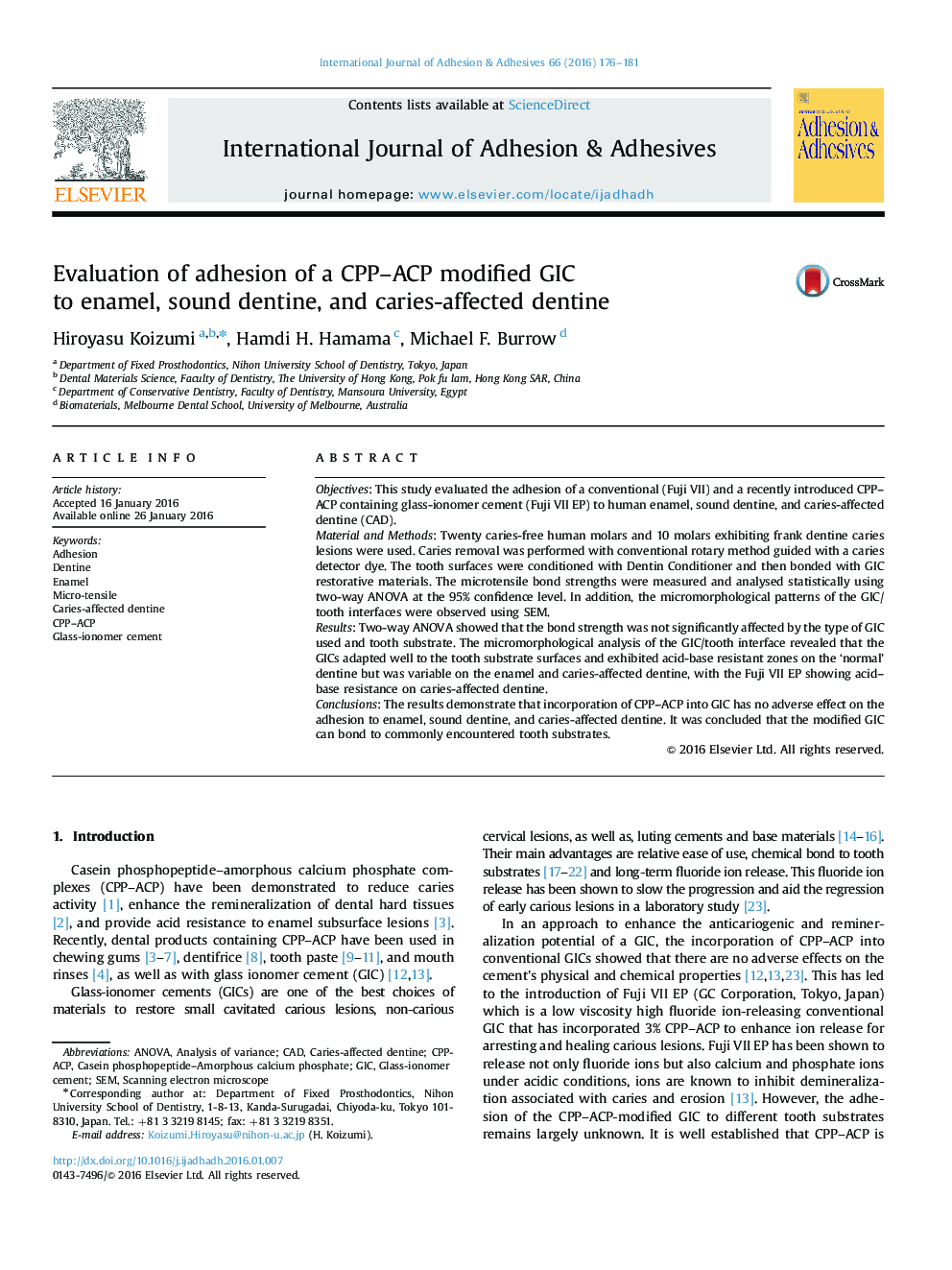| Article ID | Journal | Published Year | Pages | File Type |
|---|---|---|---|---|
| 776611 | International Journal of Adhesion and Adhesives | 2016 | 6 Pages |
Objectives: This study evaluated the adhesion of a conventional (Fuji VII) and a recently introduced CPP–ACP containing glass-ionomer cement (Fuji VII EP) to human enamel, sound dentine, and caries-affected dentine (CAD). Material and Methods: Twenty caries-free human molars and 10 molars exhibiting frank dentine caries lesions were used. Caries removal was performed with conventional rotary method guided with a caries detector dye. The tooth surfaces were conditioned with Dentin Conditioner and then bonded with GIC restorative materials. The microtensile bond strengths were measured and analysed statistically using two-way ANOVA at the 95% confidence level. In addition, the micromorphological patterns of the GIC/tooth interfaces were observed using SEM.Results: Two-way ANOVA showed that the bond strength was not significantly affected by the type of GIC used and tooth substrate. The micromorphological analysis of the GIC/tooth interface revealed that the GICs adapted well to the tooth substrate surfaces and exhibited acid-base resistant zones on the ‘normal’ dentine but was variable on the enamel and caries-affected dentine, with the Fuji VII EP showing acid–base resistance on caries-affected dentine. Conclusions: The results demonstrate that incorporation of CPP–ACP into GIC has no adverse effect on the adhesion to enamel, sound dentine, and caries-affected dentine. It was concluded that the modified GIC can bond to commonly encountered tooth substrates.
